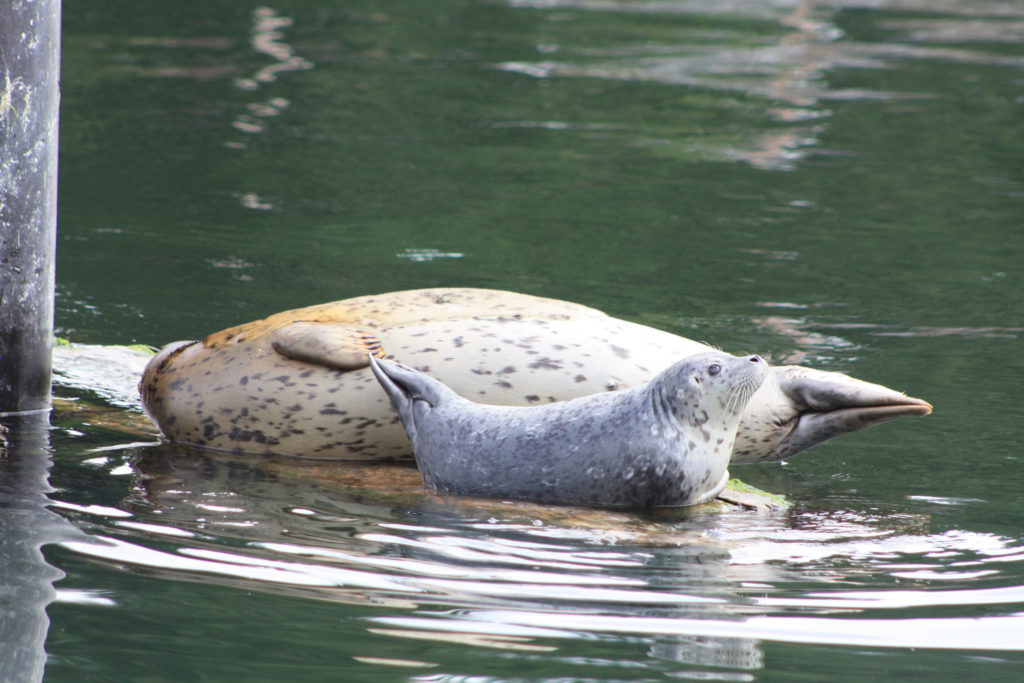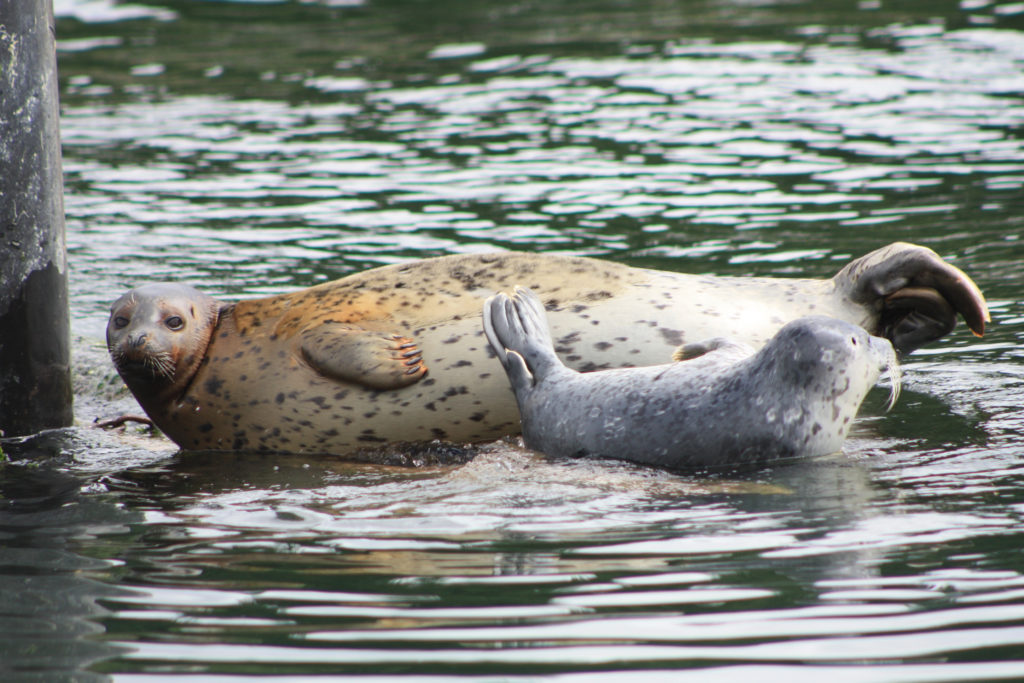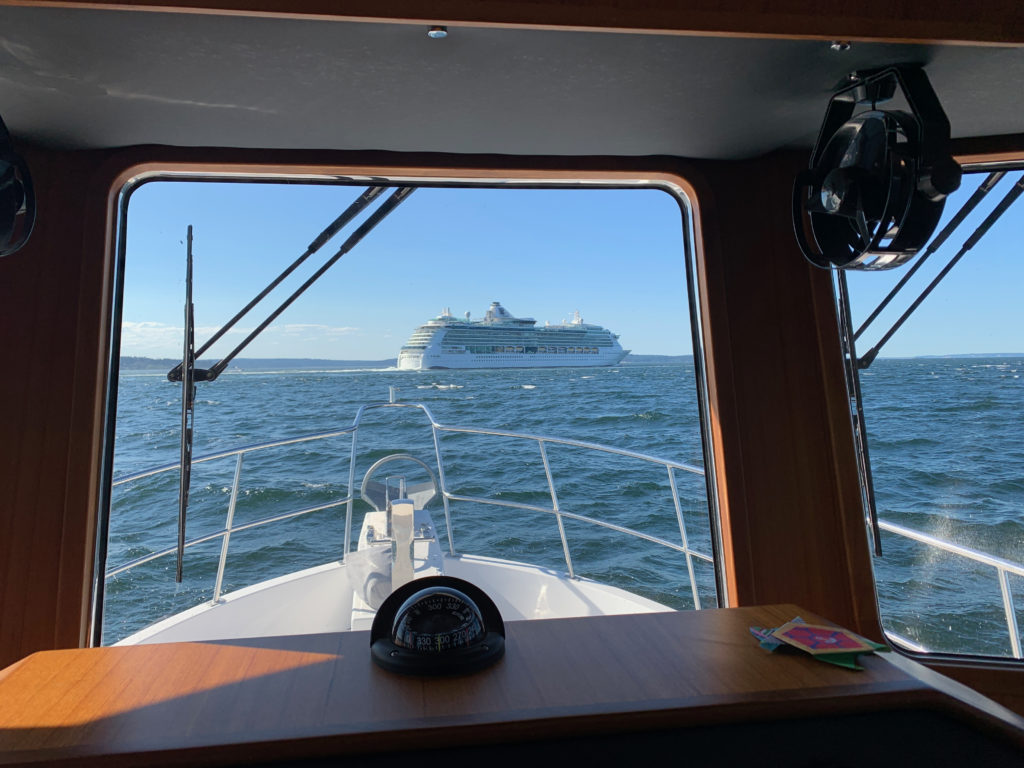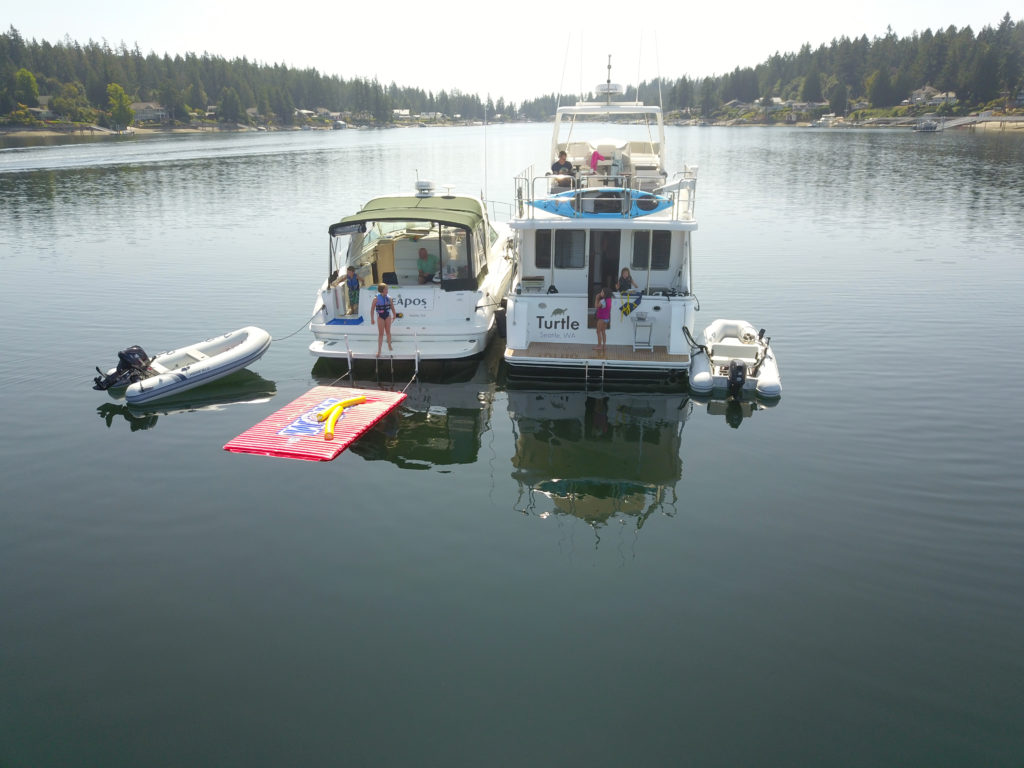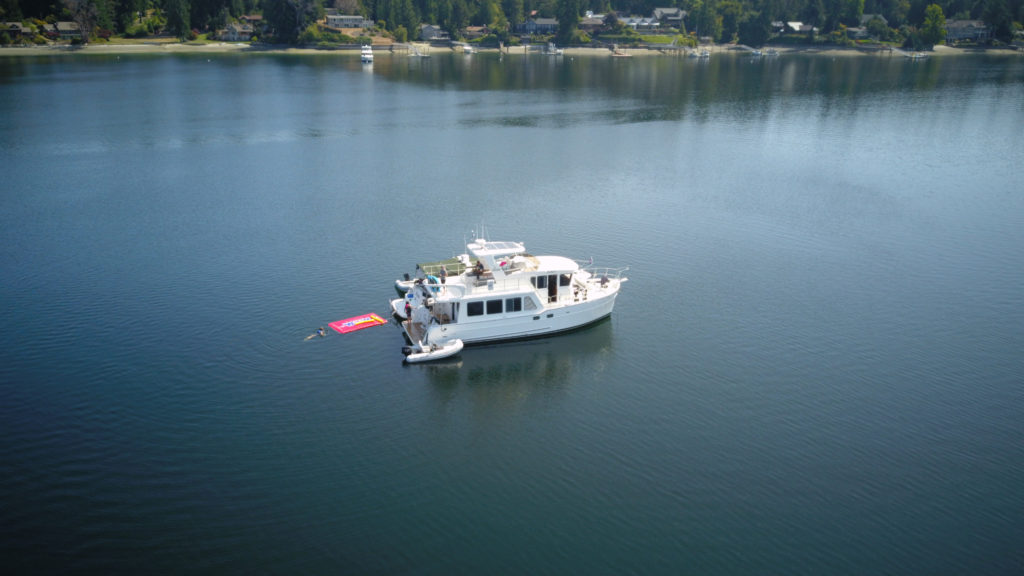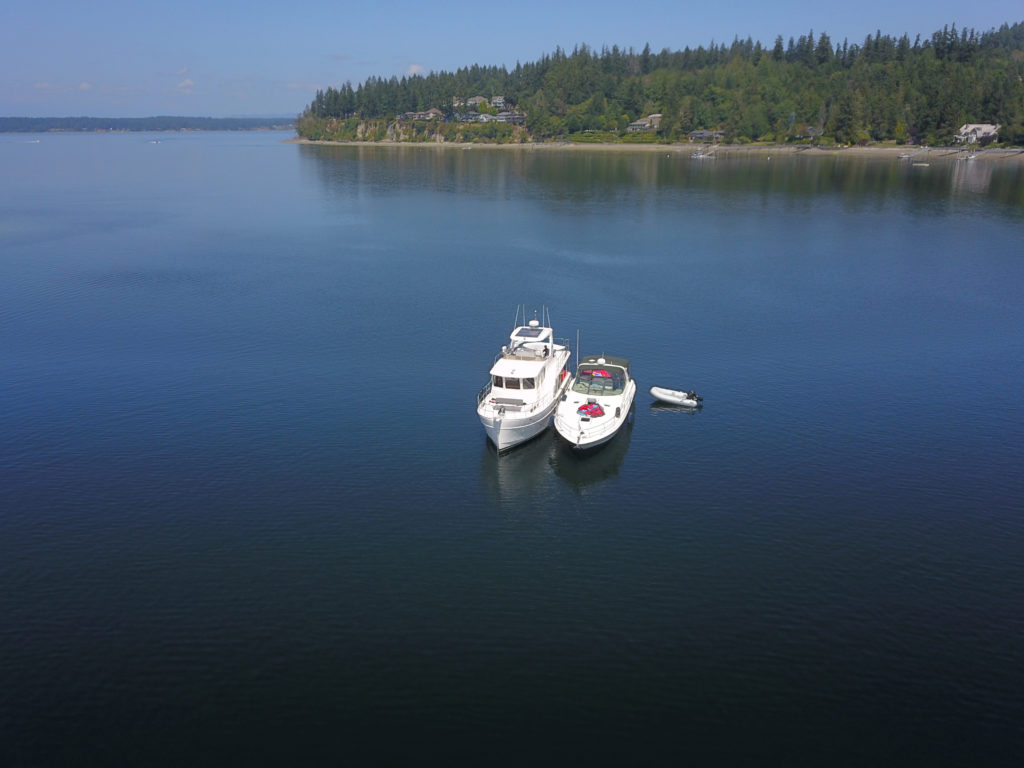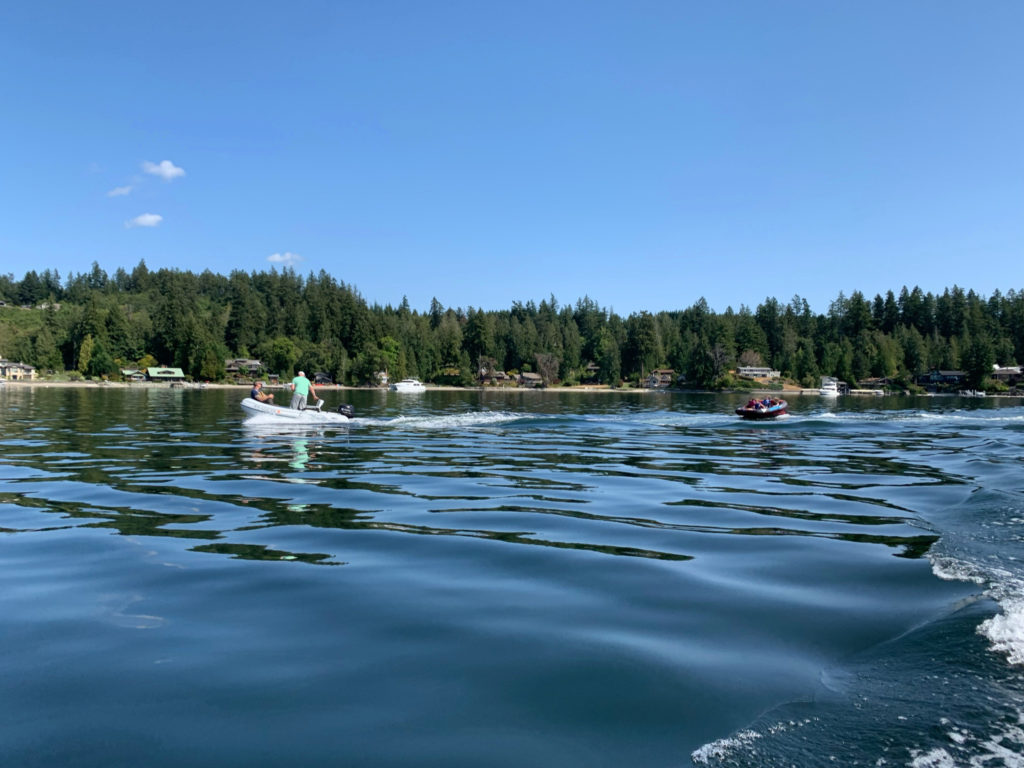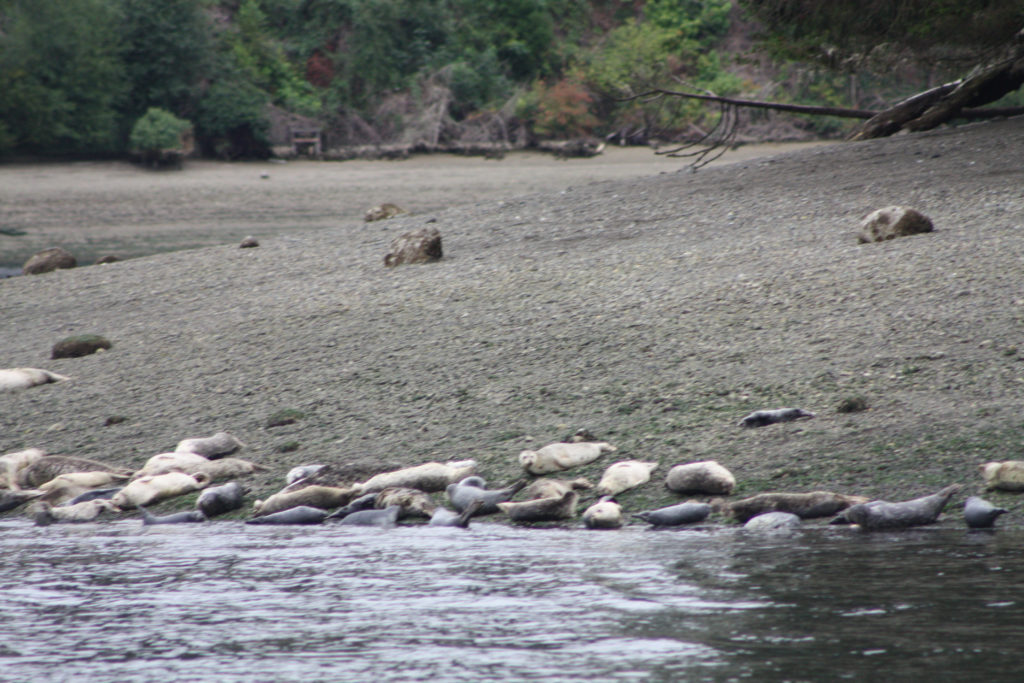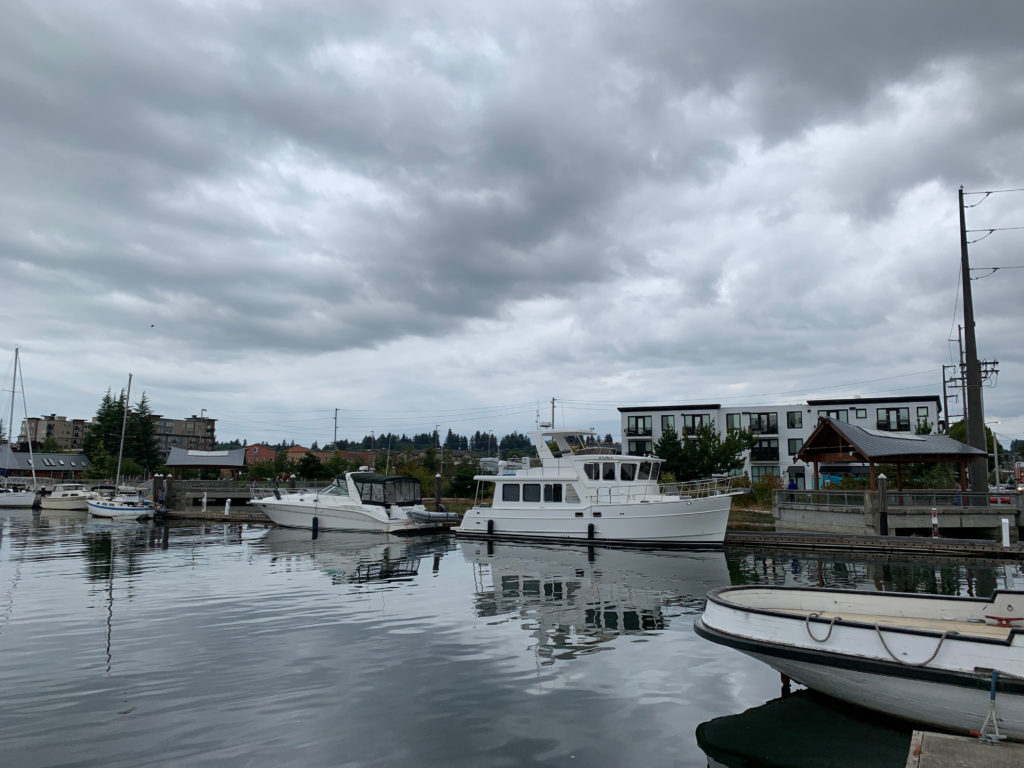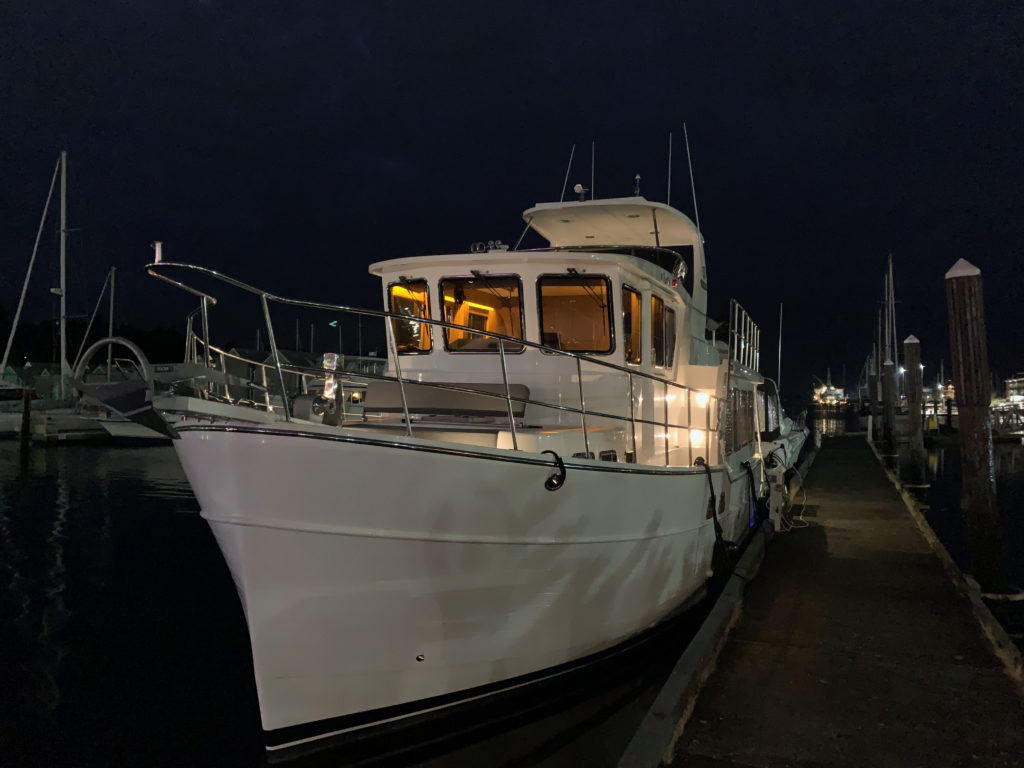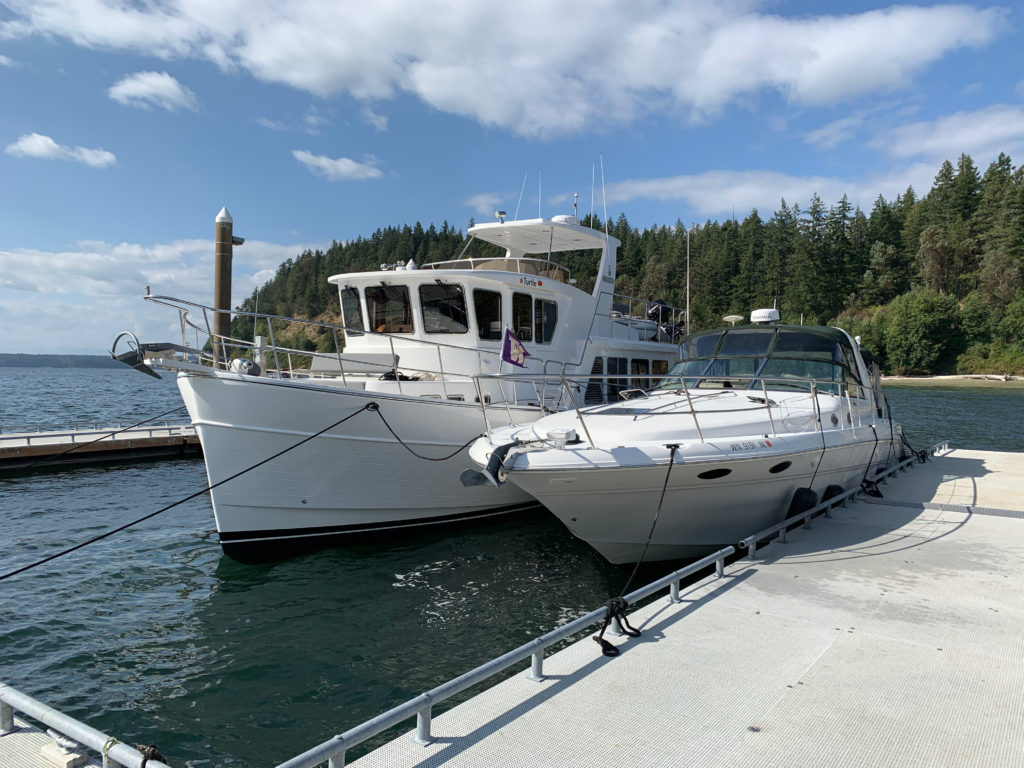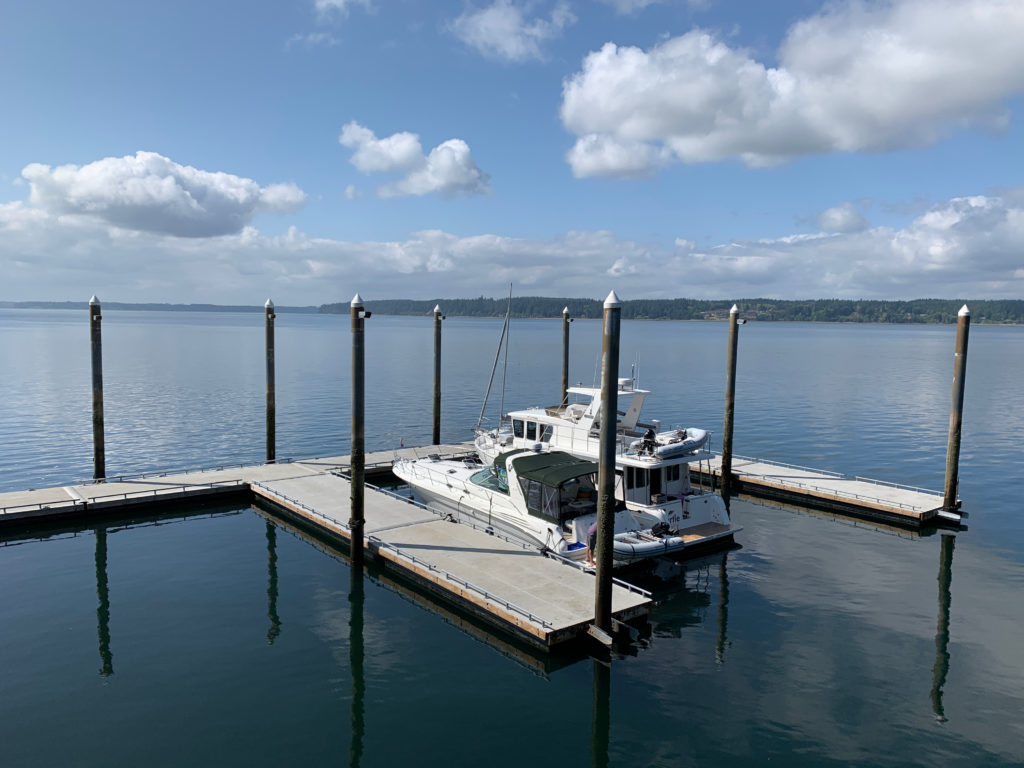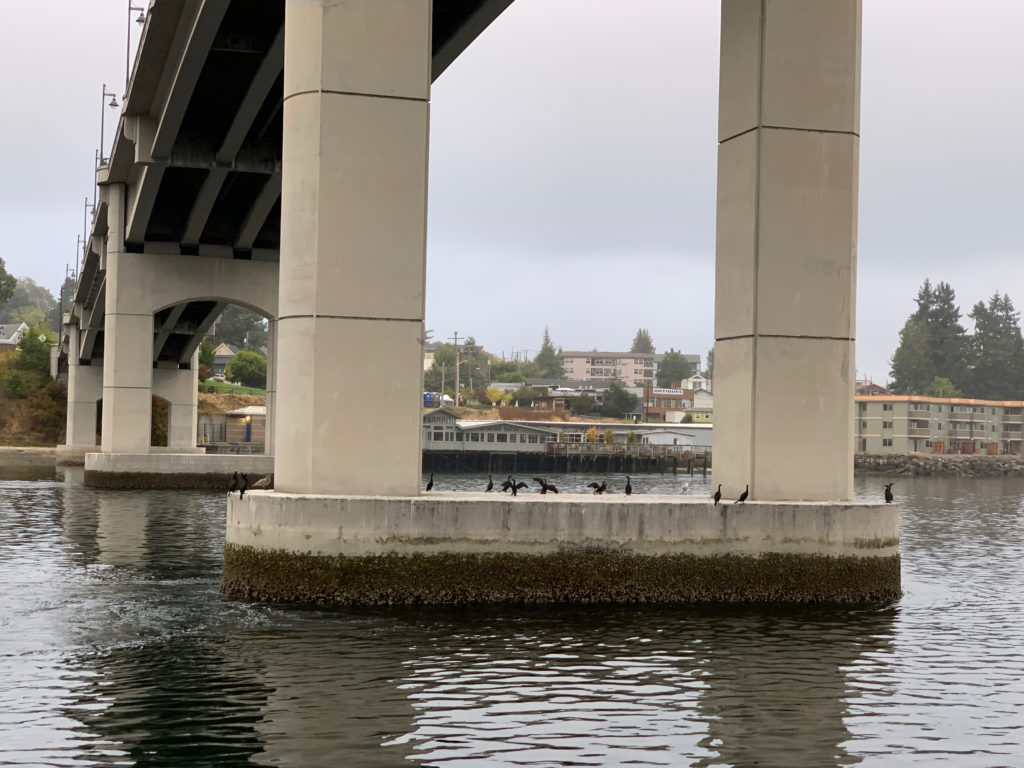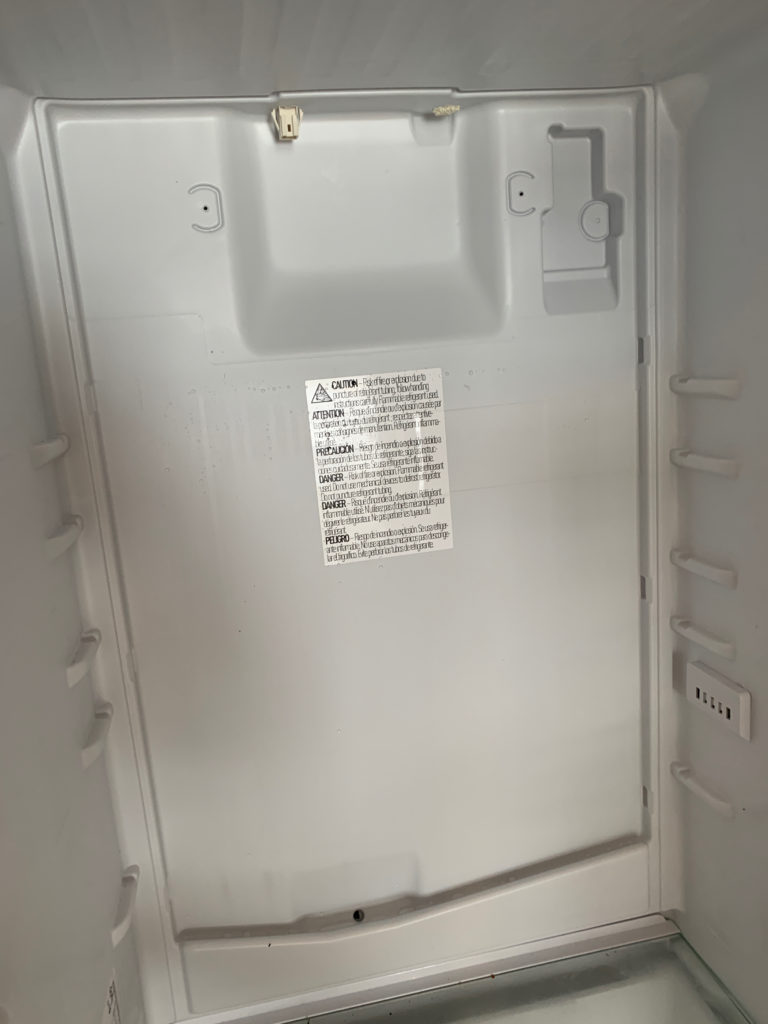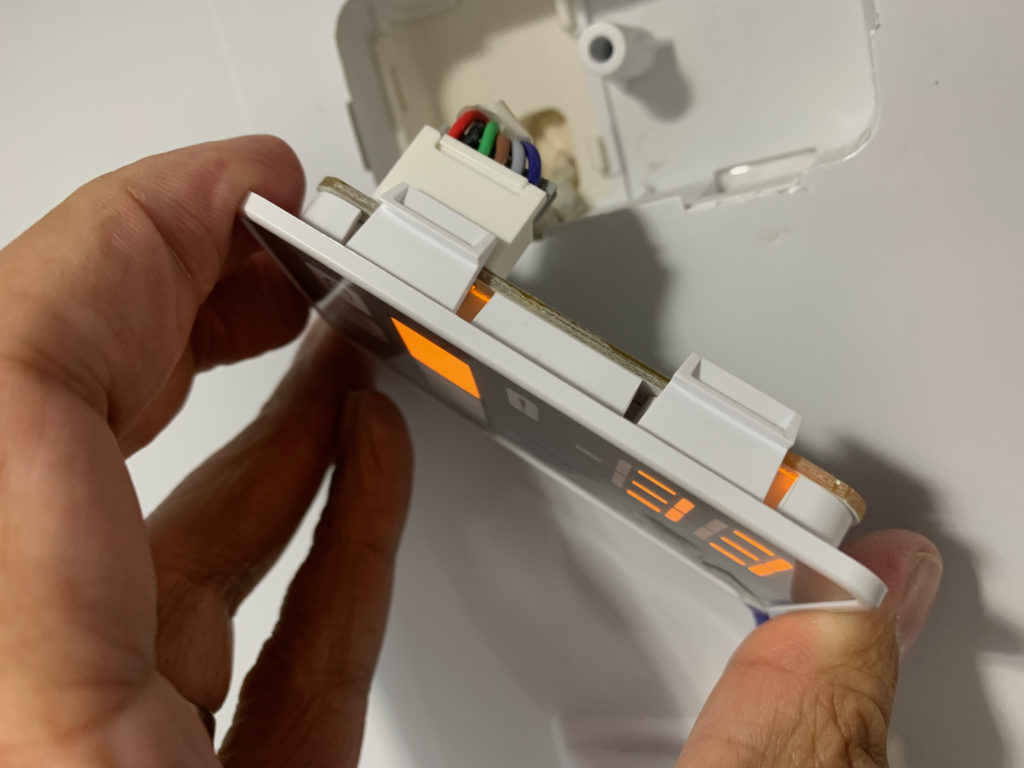Been doing a lot of cruising. Some maintenance. We’ve got 190 hours on the main. Let’s jump right in…
Small Stuff
- Replaced the propane sensor. It was going off… well, not really randomly, but not associated with anything toxic (e.g. cold air from the fridge). Seems to be working for now.
- Replaced the hydronic touchscreen. It was not waking up sometimes. The new one does the same thing. Called ITR tech support and left a message. I think there’s like three people who work there, so I’m not optimistic they’ll get back to me.
- Replaced the filters in our drinking water system. The water from the water maker is pretty pure – I think much cleaner than the Kitsap county water we pull off the dock spigot. But, it’s nice to filter out any hint of smell from it sitting in the FRP tank in the bilge. The old ones were no where near their 650 hours of use, but it had been a year.
- Still haven’t done anything about the boat Internet, but my marina neighbors are all about the WeBoost system. It’s still a fixed antenna on the outside, but all it does is amplify the signal for cell phones internally. So, you basically use a phone’s hot spot function and this helps pull in the signal. I guess it comes down to the nuances of the data caps for “hot spot” plans (i.e. a sim you plug into a modem and share over wifi) vs. “unlimited data” plans for phones used as hot spots (the “unlimited data” is rarely really unlimited and that usually doesn’t extend to when the phone is used as a hot spot). The cellular market is really dumb.
- Replaced the fan and control panel in the fridge. It had stopped getting cold. The freezer still worked and the fridge was cool-ish, but not really keeping up. So, the compressor was working but for some reason the fridge was weak. The fan was spinning but not often or fast enough. It’s under warranty but we were leaving for a trip, so they sent me parts and I put them in, (since that was a better option than waiting two months to swap out the whole fridge and ship the old one back). The new parts seemed to do the trick. I added a cheap bluetooth sensor to track the temp (it never really gets down to the setting on the panel, but it’s cold enough). Bonus, we picked up a chest refrigerator as a backup and it’s a nice addition to the boat. We got a good one, so it serves as a bench and additional cold storage.
ELCI
We’ve gone down the rabbit hole on this one. We took the boat to an ABYC electrician and he was stumped. When he clamped the shore power cable, he was seeing up to 100 mA of leakage which wasn’t strongly correlated with any particular device on the boat. This should not only have tripped the boat breaker (it never tripped when we were there), it also should have tripped the shore power breaker (this marina was all up to the new spec). Just to be sure, we tried multiple different shore power plugs, tested with multiple meters, and even clamped a bunch of different boats. Everything was leaking but nothing was tripping. His proposed solution was to install an isolation transformer and call it a day. He also never called me back (this is a thing with boat technicians). While I am not opposed to an isolation transformer, I would really like to understand what’s going on before I throw money at the problem. Plus, with two shore power inlets, I would need two transformers. Not only are they heavy and expensive, they could potentially be loud.
There’s a small chance that changing the control panel on the fridge may have addressed this. The fridge was behaving erratically, so maybe some control system in the firmware was causing excessive inrush current during some compression cycles. I’m not optimistic about this theory.
Dexron
Pulling together all the parts for routine maintenance is turning into a much bigger challenge than I anticipated. I decided to start with the transmission, because of this:
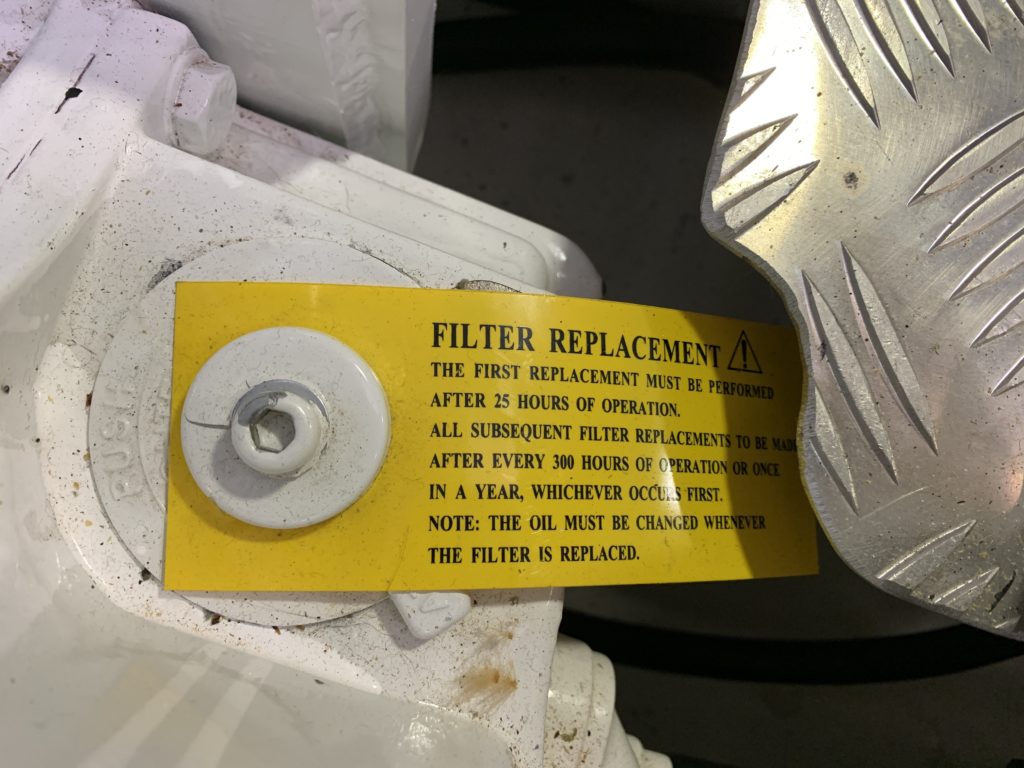
Twenty-five hours… yeah… didn’t catch that.
First, sourcing the filter. Just finding the part number took 30 minutes of spelunking through printed manuals and internet searches. I finally just called the manufacturer (ZF). They referred me to a reseller. The ZF parts department specifically said “Call Mike, at Harbor Marine. He’s got like 100 of them.” So, I called Mike and got Ben (or someone) because Mike was busy, and Ben said “oh yeah, we’ve got like 100 of them.” So I gave him my credit card number over the phone and the filters arrived in a few days. Modern world.
ZF also sent me a parts manual, which I didn’t get in my packet from North Pacific. It was very explicit about not using the wrong kind of transmission fluid. But, when I asked what was in there or required, Trevor said “that’s ATF”. Also, Vikki, with the ZF parts department said, “that’s ATF”. Which is like saying, “that’s automatic transmission fluid”, which is as helpful as saying “use the pink stuff”. So, working my way through the list of several hundred options from the part manual, I discovered that virtually none of them were available from the usual online places, from any of the usual chandleries, or from any local auto parts store. Trawler forum was as helpful as usual, the two variants being, “I’ve used nothing but 30W oil and clover honey in my transmission for 60 years and it’s been fine,” (The Technician). And, “If you don’t use the right spec your transmission will disintegrate and your boat will explode” (The Engineer). Most people thought I was crazy for worrying – but a few gave dire-old-witch warnings about following the specs. I called around a bunch and most people said “use Dexron 3… but don’t mix it if something else is in there.”
So, here’s the deal with these types of specs. The manufacturer will qualify a bunch of fluids, basically that the transmission performs as expected when filled with them. This doesn’t mean that other fluids won’t work, but that these are the ones that they had time to test. What’s not clear to someone like me is what the error bars are on the specs. So, 99% of transmission fluids may be very very close in viscosity and performance, with the differences being driven by obscure engineering tolerances (at the margin) or marketing. But, there may be critical differences, such as detergents or other additives – or just differences in lifespan (i.e. it only stays at the target viscosity for 100 hours instead of 300). Also, when you change the fluid, there’s always some left, so you’re inevitably mixing. Conceivably, mixing different viscosities could cause foaming, which is Bad.
My question is, in this case, is the Engineer right, or is the Technician right? 99% of the time, the Engineer is right – over a long enough time horizon. So, using the wrong fluid may increase wear such that the total lifetime is reduced from ~10,000 hours to ~9,832 hours before a rebuild is required. When it comes to solving immediate problems, Technicians are often right – and know how to make tradeoffs to solve the problem at hand. When an Engineer tightens a filter housing, he does it to six newtons with a torque wrench. When a Technician does it, it’s hand tight, because he left his torque wrench in the truck, and that oughta do it, anyway.
Then, I found this:
For ZF 12, 15, 25, 30, 45, 63, 68, 80, and 85 series, and Velvet Drive 71C, 72C, 73C, and 5000 series, use an ATF fluid which meets Detroit Diesel Allison C-4 specifications (e.g.: Dexron IIE, Dexron III).
I also called Dave Rasmussen (who commissioned Turtle) and he totally understood my confusion. “Just use Dexron 3. These transmissions are simple and tough.” Point #2.
Finally, when, I serviced the transmission in my old boat (also a ZF), I just used the fluid that was in the engine room and never worried about it. The transmission ran cool and smooth.
So, I ordered a Dexron III compatible fluid that’s not on the approved list. Castrol doesn’t even make the approved stuff any more. But: “Meets DEXRON-III H requirements and satisfies requirements of DEXRON, DEXRON-III, IIE and II” and “Introduced in 2003, GM’s Dexron III(H) specification (GMN10055) replaced III (G). The (H) is an additive package for an updated friction modifier and with an oxidatively stable base oil (group 2). Oils according to this specification have longer maintenance of friction properties and anti-shudder properties, better foam control and a longer fluid life. Universal for all automatic transmission with and without controlled torque converter lockup clutch, the so-called GKÜB for gear-clutch-lock.”
Good enough.
I did find Motul Dexron III which is on the approved list, but at this point I think I’m starting to drive myself crazy – so I stuck with the original order.
I’ll let you know if I destroy my gearbox.
Cruising
Piloting this boat is a joy. I’ve taken to single-handing quite a bit (or just me and the kids) and it’s set up very well for that. We’ve also fallen into patterns with live-ability – meals, showers, etc. We’re out all the time. This summer, we took a dozen short trips and one long one to south sound. I can’t get enough of it. Any day on the water….
